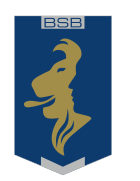Brigade Speciale Beveiligingsopdrachten
The Brigade Speciale Beveiligingsopdrachten[1] (Special Security Missions Brigade)[2] or BSB is a special operations unit of the Koninklijke Marechaussee, the Dutch gendarmerie corps. Although the BSB conducts special operations, it is not a part of the Netherlands Special Operations Command (NLD SOCOM).
| Special Security Missions Brigade Brigade Speciale Beveiligingsopdrachten | |
|---|---|
 BSB badge | |
| Abbreviation | BSB |
| Agency overview | |
| Formed | 1976 |
| Employees | About 450 operators |
| Jurisdictional structure | |
| Operations jurisdiction | Netherlands |
| Specialist jurisdiction |
|
| Operational structure | |
| Overviewed by | Ministry of Defence |
| Parent agency | Royal Marechaussee |
| Website | |
| Official page | |
The BSB works together with M-Squadron in cases of an increased terrorist threat in the Netherlands.[3]
Origin
The Brigade Speciale Beveiligingsopdrachten found its origin as the Dutch counterpart to the German GSG9, basing its structure on the German unit.[1] It was created in 1976 due to the risk of the Netherlands being a terrorist target in the 1970s.[4]
The task
The BSB was established as a bridge between the Special Assistance Unit (BBE) from the Marine Corps and the SWAT team of the police. The BSB, which is part of the military police and therefore a military organization consists only of soldiers. These are recruited from its own ranks of the military police, regional police and various special defense units (i.e. Commando Corps, Marine Corps and 11 Airmobile Brigade). All BSB'ers follow the BSB training and then further specialization (OT, AT, etc.). Also follow the candidate BSB'ers who do not come from the Royal Military Constabulary and police training for General Investigation Officer. The official job title is "Sergeant special assignments" (or the rank applicable).
The BSB will in all cases act as a unit and never come out as an individual. From protecting the privacy of its members, the BSB does not comment on personal details.
The BSB has four divisions:
- Close Protection
- Observation
- Special Assignments
- Arrest Team
Personal security
This mainly concerns the (personal) security of embassy personnel; include foreign (military) attachés. This VIPpers (as they are also called) works closely the DKDB ( Royal and Diplomatic Protection ) of the National Police.
Observation
Like any OT is the IP BSB deployed after a charge for systematic observation was issued by a prosecutor. The legal frameworks for this are given in the Code of Criminal Procedure and the Law Special powers . Systematic observation loves nothing more or less than the secretly observing people in order to (partly) to gain insight into his private life. Often this is accompanied by 'tapping' (interception) of the phone (s) of the subject. The duration of the observation says nothing about whether or not systematic. The depth and purpose though.
Observation Teams use the BSB in dynamic observation nondescript cars (vehicles without special modifications) to follow, from photographing or filming. Static observation often happens from one (or several) fixed objects from which a subject (person) is viewed. This usually happens in so-called driving and follow teams of 7 to 10 members.
At major events mixing members of the surveillance team is among the spectators or they take place (usually high) strategic locations. Observing 'dangerous' activists is also a task of the BSB. This is done regularly on request include the AIVD . The observation teams from the AIVD indeed are not armed, which the BSB however.
Special Missions
Under the mandate of special missions department under other securing POLADS (political advisors, diplomats and convicted criminals under severe threat to life). Also, Special Assignments task to perform special assignments for the state.
Arrest Team
The SWAT team (Arrests dings and support AOT) of the BSB will be deployed to take action in life-threatening and tactically difficult situations, such as the maintenance of armed and dangerous criminals, the overpowering of jumpers (people on the verge of committing suicide), performing specific work at height and negotiate or act during a hostage situation. The AOT BSB is widely used against foreign criminals to be arrested in the Netherlands or to be overpowered. The AOT BSB will also perform arrests of soldiers when necessary, since the BSB is part of the Royal Military Police.
Equipment
Firearms
- Glock 17 - standard sidearm[1]
- Glock 26 pistol[1]
- Heckler & Koch P9 pistol
- Heckler & Koch MP5 SMG - primary weapon
- Heckler & Koch MP7 PDW
- FN P90 PDW[1]
- Heckler & Koch HK416 assault rifle - for special assignments[1]
- Heckler & Koch HK417 battle rifle
- FN Minimi light machine gun[1]
- Various sniper rifles
Vehicles
The BSB has various types of vehicles, some of which are armored. The following vehicles are known as BSB vehicles, but for security reasons no official announcements have been made:
- Volvo S60, with or without armor
- Škoda Superb, with or without armor
- BMW 5 & 7 series, with or without armor
- Mercedes-Benz armored S Class, E-class with or without armor
- Toyota armored Landcruiser 100 and Grand Vitara
The heavily armed unit has several tasks.
- SWAT team of the Koninklijke Marechaussee
- Observing and/or arresting 'potentially dangerous' activists/criminals
- Protecting money transports
- Observing events with certain risks
- Protecting very important persons
- Protecting Dutch embassies
References
Bibliography
- Neville, Leigh (2017). European Counter-Terrorist Units 1972–2017. Oxford: Osprey Publishing. ISBN 978-1472825278.
- Schmid, Alex P.; Crelinsten, Ronald D., eds. (1993). Western Responses to Terrorism. Routledge. ISBN 978-0714645216.
External links
- Official BSB page (Dutch)
| Wikimedia Commons has media related to Brigade Speciale Beveiligingsopdrachten. |